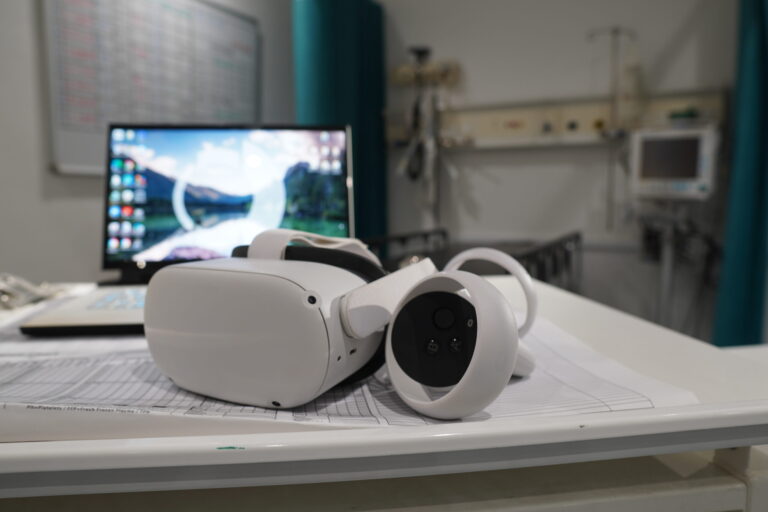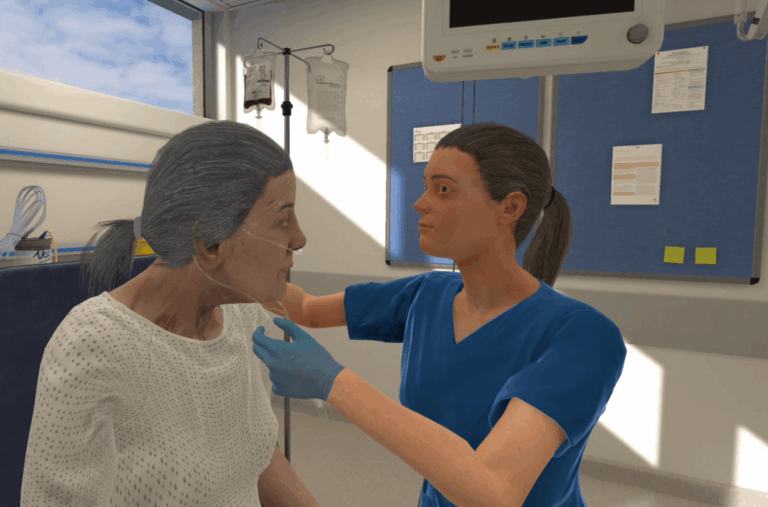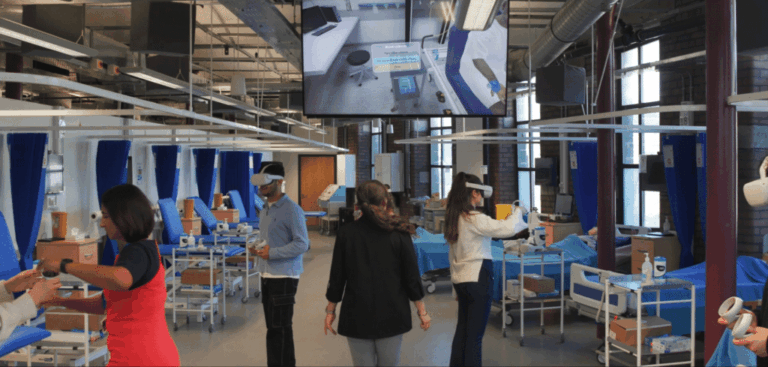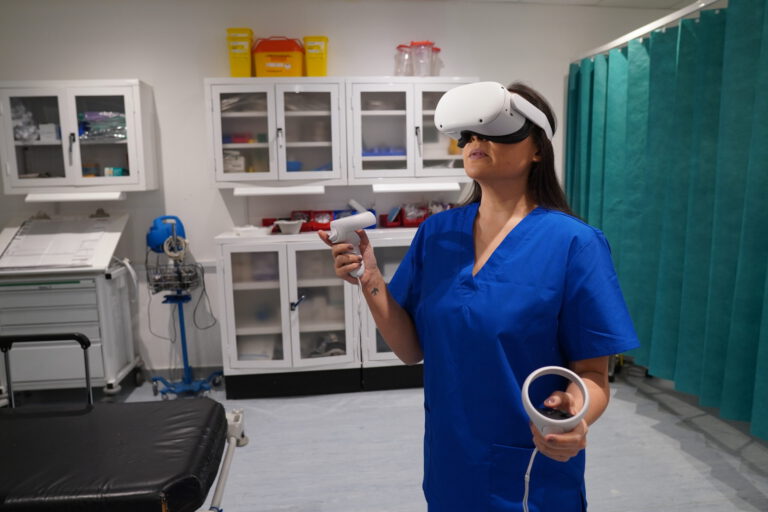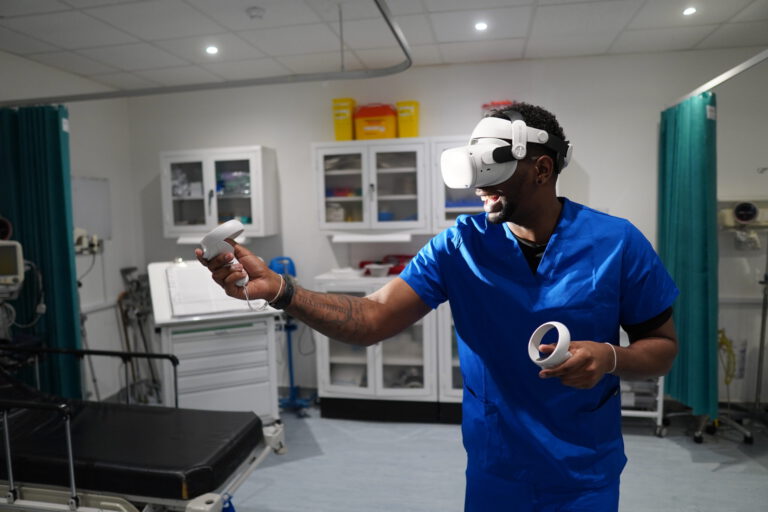October 16, 2024
post
Bridging the Gap: Insights from Our Recent Roundtable on Nursing Practice
In September of this year, we hosted a group of leaders from across the United States, inviting them to join us in San Antonio for a roundtable discussion on bridging the gap between nursing school and the transition to practice. Understanding the difficult nature of transitioning from schooling to practice, it was imperative for us…
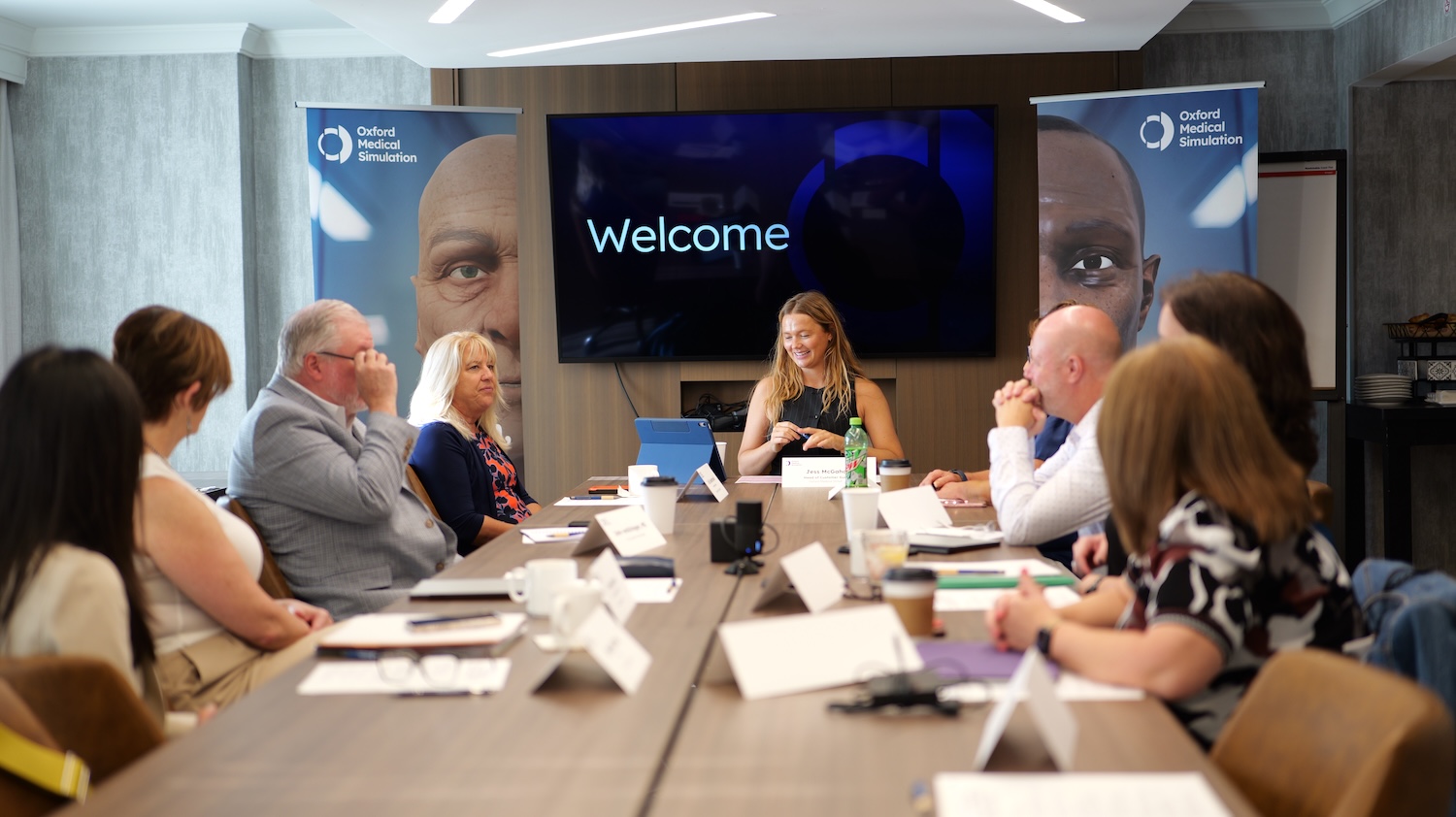
In September of this year, we hosted a group of leaders from across the United States, inviting them to join us in San Antonio for a roundtable discussion on bridging the gap between nursing school and the transition to practice.
Understanding the difficult nature of transitioning from schooling to practice, it was imperative for us to bring together top minds from both academia and healthcare to discuss key insights, challenges, and potential solutions to support new nurses as they embark on their practice journey.
Setting the Stage
Attendees came to us from all areas and backgrounds and were ready to share their insights and experiences on the day of!
Each attendee brought their own unique insight and perspective given their current role. From academia, we had several acting leaders with us, like Crystel Farina, Associate Dean at George Washington University, and Julie Poore, Director of Operations- Simulation at Indiana University.
From healthcare systems, we had with us John vanSchagen, Chief Academic Officer, and Vicki Swendroski, Clinical Quality Improvement Consultant, of Trinity Health Grand Rapids. Plus, other leaders from the healthcare space.
Everyone had a personal experience to share and a depth of professional insight that made our roundtable discussions rich and full of actionable steps to begin problem-solving key issues afterwards.
While virtual reality as a tool for education and training was an important part of the conversation, it did not take center stage at this particular event.
At OMS, our mission is to be a part of the solution in driving patient care forward, so the focus of this roundtable was to discuss and solve issues that revolve around the transition to practice – an overwhelming process for many first year nurses.

Key Topics Discussed
Readiness to practice
One of the vitally important topics discussed revolved around the support needed to ensure students are ready to practice following completion of their exams and obtaining licensure.
As only about 9% of new graduate nurses are in the acceptable range for competency, this topic holds significant value for everyone involved – new and future nurses, educators, and most importantly, for patients.
The nursing leaders who attended the roundtable event had much to say about the need to ensure and reliably measure critical thinking and clinical decision making skills prior to engaging in patient care.
Additionally, addressing the disconnect between nursing school and nursing practice is key in preparing learners ahead of their journey into patient care.
For many of the thought leaders present, building communication skills for new nurses is another area of focus – for both patient-centered and interprofessional communication.
Of note, many new nurses have spoken about feeling fear when it comes to communicating with patients or other team members, which can hamper their ability to feel confident in the care, education, and handovers they’re providing.
Transition to practice
Readiness to practice is one thing. Successfully making the transition from student to bedside nurse is another.
Nursing leaders attending the roundtable discussed the need for alignment and connection between nursing schools preparing students for practice and the institutions onboarding them.
While the logistical difficulties of this idea were noted and discussed, the fact remained that leaders from both healthcare systems and academia wanted to see more consistent communication and alignment between nursing schools and healthcare systems.
Areas of alignment included funding, research, community outreach, and ensuring a shared mission for all involved.
Expectation-setting was again an important point of discussion here, along with the need for strengthening the framework between healthcare systems and their academic partners.

Highlights and Takeaways
As attendees discussed the multitude of ways to align both healthcare systems and nursing academia, potential solutions began to take shape as they honed in on the key topics noted above.
Preparedness for practice
One way to prepare new nurses is to account for the inevitable shift in perspective that takes place once nurses are licensed and autonomously seeing patients.
Setting expectations for students going into practice, normalizing the emotional difficulties they may face, and talking about navigating gray areas were key points. In particular, preparing students for the expectation of escalating care.
There may be another valuable perspective shift for new nurses in moving away from the idea that you must have a diagnosis or ‘know it all’ before bringing in others to help.
Instead, the emphasis is placed on the early identification and escalation of worrisome signs or symptoms, so rather than new nurses feeling they must know everything first, they’re encouraged to lean on the team environment, making others aware of status changes early and knowing they have the resources to figure out what to do next in areas of uncertainty.
Simulation inevitably became a key point of discussion, particularly as it relates to the early recognition of acute symptoms and the communication skills needed to educate patients, families, and other team members.
Attendees discussed the use of virtual reality to address the above issues, and, in particular, highlighted the psychological safety of the modality alongside the repeatability of VR simulations.
Those who had opened up VR access to learners reported, in some cases, additional requests from learners for more, and one institution reported they saw spontaneous repeats of VR simulations. This demonstrates both the value from an educator perspective, but also from the learner perspective – many learners report wanting more opportunities for VR simulation, and have even taken it upon themselves to repeat scenarios until they feel comfortable and confident in their skills.
Transition to practice
For new nurses entering the field, having an awareness of expectations is crucial to early success.
Collectively, attendees talked about the openness and flexibility that’ll be required from both healthcare systems and academic institutions in order to set expectations and determine what an onboarding or education looks like.
One important piece of information was asking, “Are we looking at AACN Essentials the same way”?
Aligning on goals, outcomes, and expectations is an important part of getting on the same page. Additionally, sharing of student progress for key competencies was discussed as a way to double check competency or avoid redundancies, making onboarding a more efficient and individualized process.
There was also much collective discussion on sharing a social mission and reaching the local community.
Again, simulation and technology were a large part of the conversation here, with some highlighting the portability and scalability of VR as a means to bring the latest care to rural settings while also aligning and collaborating with healthcare partners to bring the vision to life.
VR was also discussed as a means to contribute to improving retention for those new nurses making the transition to practice. Providing supportive preceptors and mentors for new nurses also factored into the discussion, while the use of virtual reality and advanced technology signals to staff the value and emphasis a facility places on continuing education and professional development.

What’s Next?
These informative insights are a handful of the many topics, challenges, and solutions discussed at the roundtable event.
We were thrilled to be able to host the incredible group of nursing leaders who participated in this discussion, and we cannot thank them enough for the time, energy, and openness with which they shared their experiences and insights.
With so much rich discussion still to be shared, we are putting together a whitepaper to delve into the nuances surrounding these key topics, which we look forward to sharing soon!
Want to be the first to know about the whitepaper?
Sign up for our newsletter to keep an eye out for an upcoming whitepaper that dives into detail on all that our nursing leaders discussed, highlighting key challenges and solutions for nursing readiness and the transition to practice.
Related
Ready to get real?
See how OMS can help your organization build confidence, competence, and clinical readiness for today’s healthcare.
